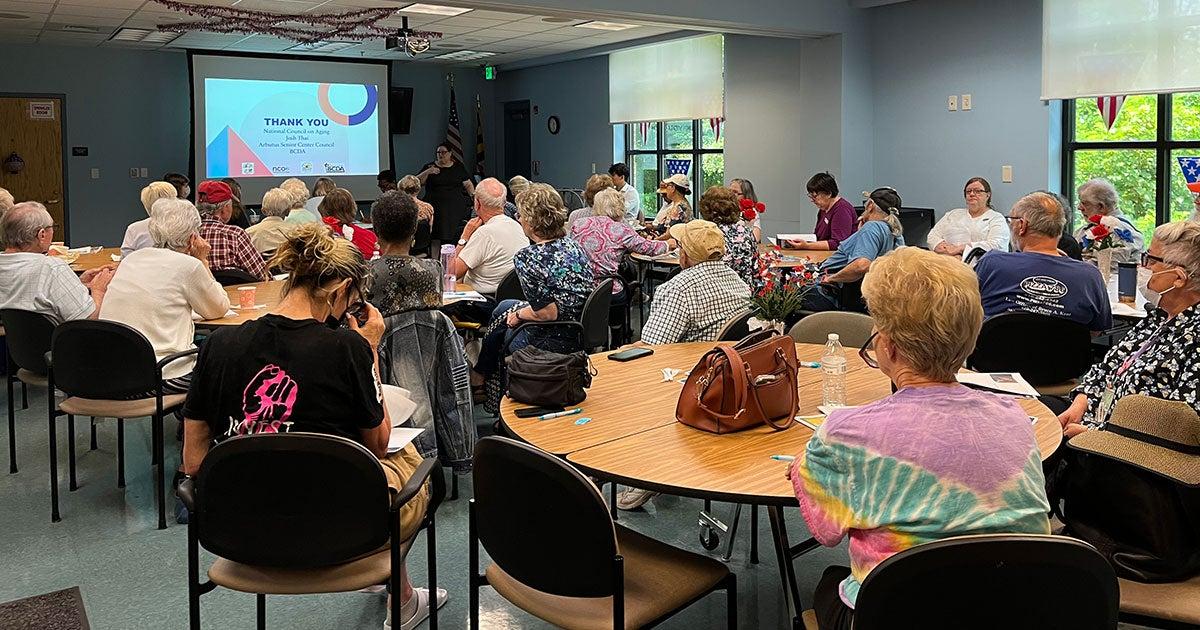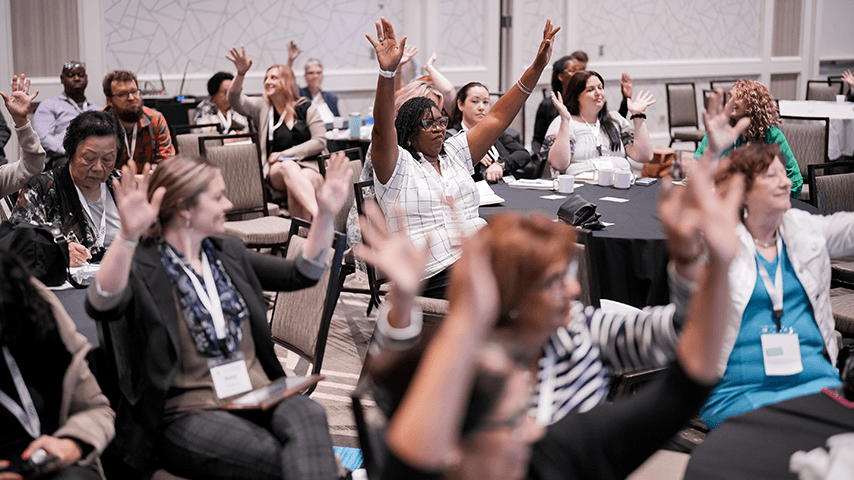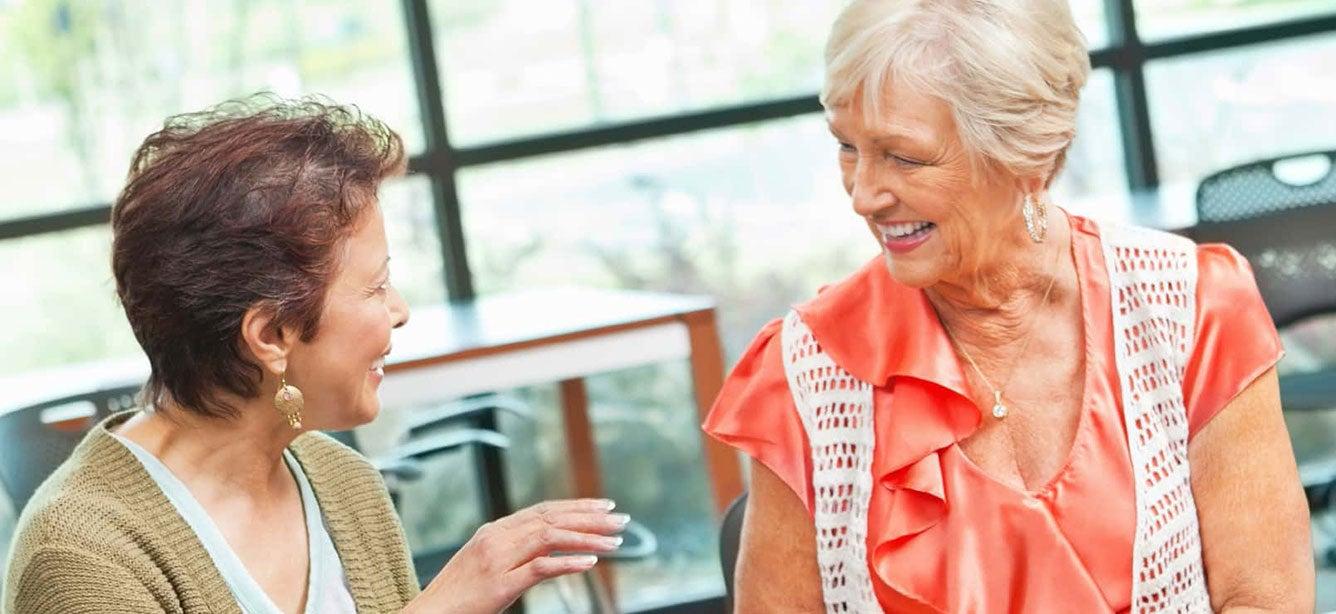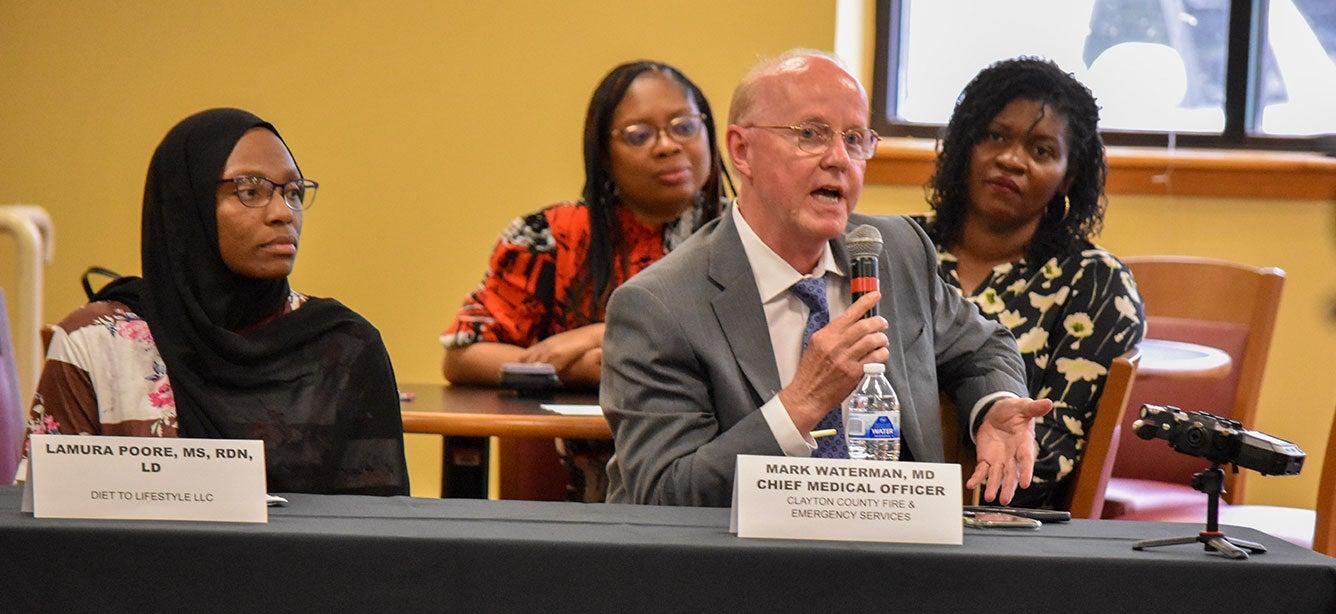
In thousands of locations across the country, senior centers serve as the glue that binds vibrant and thriving communities together. Here, visitors of all ages, backrounds, and walks of life discover companionship, support, and the robust resources they need to stay healthy, active, and independent.
But what about older adults who live with mobility challenges, don’t have reliable access to transportation, or face other barriers? Can senior centers effectively engage their socially isolated neighbors and help mitigate loneliness among those who are harder to reach? If so, how?
To better answer these questions, we surveyed National Institute for Senior Center (NISC) members about their experiences—and 44 centers responded in detail.
"It’s so important for all of us in the aging services profession to learn from each other, especially because we know that loneliness is a serious public health issue,” said Dianne Stone, NCOA Associate Director of Network Development and Engagement. “Together, we can work to ensure that every person has the same opportunities to age well.”
In that spirit, here’s a snapshot of the responses we received:
Finding those who are isolated
Reaching out to isolated community members can be a challenge. As one survey respondent noted:
This is hard because they are often the ones with small social circles, limited mobility, and limited income.
Nevertheless, many senior centers do effectively connect with hard-to-reach neighbors using a variety of formal and informal networks and approaches, including:
- Local police and fire departments
- Social service and faith-based organizations
- Outreach via community newspapers and flyers
- Senior housing complexes
- Peer and family identification
Members who responded to our survey also stressed the importance of making a good first impression. Welcoming newcomers to the center, providing a tour of the facility and activities, and introducing them to potential new friends increases the chances that they will return.
Offering relevant and engaging services
Many of the activities traditionally associated with senior centers—such as fitness classes, parties, dances, conversation groups, congregate meals, themed celebrations and more—often succeed in drawing in participants who struggle with isolation and helping them find companionship and support.
Many centers recognize that there are ways to serve people who don’t come through their doors. That’s why many of them offer tailored activities to better reach those face transportation, mobility and other barriers to participation. These services include:
- Telephone reassurance programs
Senior centers whose staff or volunteers make regular phone calls to older adults who are unable to leave their homes report greater connections with—and reduced isolation in—the people they call. - Intergenerational connections
One senior center in New York City engages high school seniors to visit blind and visually impaired older adults throughout the city. In addition to offering friendly visits, these students help their "buddies" with shopping, reading mail, and escorting them to appointments. Another center draws on first-year nursing students at the local community college to visit isolated older adults in their area. - Activities for those with physical/cognitive impairments
Older adults living with physical or cognitive differences can be particularly difficult to reach. One center has developed a “Short and Sweet” program that takes participants with mild to moderate mobility impairments out for a meal and tour of a local attraction twice a month. Another center hosts a “Memory Café” for older adults with dementia and their caregivers, providing socialization and support. - Special meal and companionship programs
One center organizes “Home Tea”—bringing comforting beverages and inspirational cards to people's homes once a month. Another runs “Simply Soup,” a community event where participants gather for a meal and entertainment, with vans picking up those who lack transportation. Yet another center partners with a local restaurant that donates two meals per month for participants who then invite a friend to dine with them. Volunteers manage these “Elegant Dinner Deliveries” by picking up the meals; setting the scene at home with nice placemats, dishes, and silverware; and even offering a small gift to the diners.
Because lack of transportation is a key barrier for some older adults, a number of senior centers are using community resources to organize group transportation to events, both at their centers and in the community.
Results that matter
Roughly half of those surveyed said they track whether their outreach to isolated populations is successful. Most commonly, they count the numbers of participants who return for events and activities, and provide surveys to assess what services they should continue, add, or drop.
But even among those centers that don’t collect this information, there are informal indicators of success based on the smiles and feedback of those they reach. As one center noted:
We have seen folks come in wearing slippers and sweatpants, sitting off to themselves and doing nothing. After a while, their appearance starts to change and before you know it, they are wearing jeans, button shirts, and real shoes, participating in activities and dominating conversations … Home-delivered meal folks enjoy the volunteer visit daily, and we have heard from numerous families how much it means to them, that short visit once a day.
The importance of virtual and hybrid programming
Perhaps one silver lining of the COVID-19 pandemic that began in 2020: senior centers have become increasingly adept at offering online versions of what once were solely in-person programs and supports. There's also been exponential growth in hybrid offerings so people can choose whether to attend in-person or online.
The NISC Programs of Excellence recognize outstanding programs in the "Technology, Virtual, and Hybrid" category that strengthen senior center reach.
Your work matters—and we’re here to support your success. If you’re not already a member, we invite you to become a NISC affiliate. And be sure to bookmark our Modernizing Senior Centers Resource Centers page, which includes a wealth of information and tools to help you meet the every-changing needs of the communities you serve.




